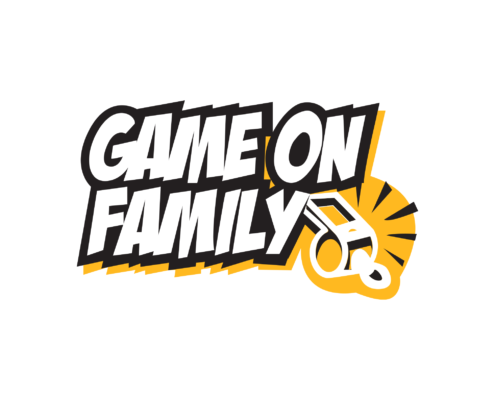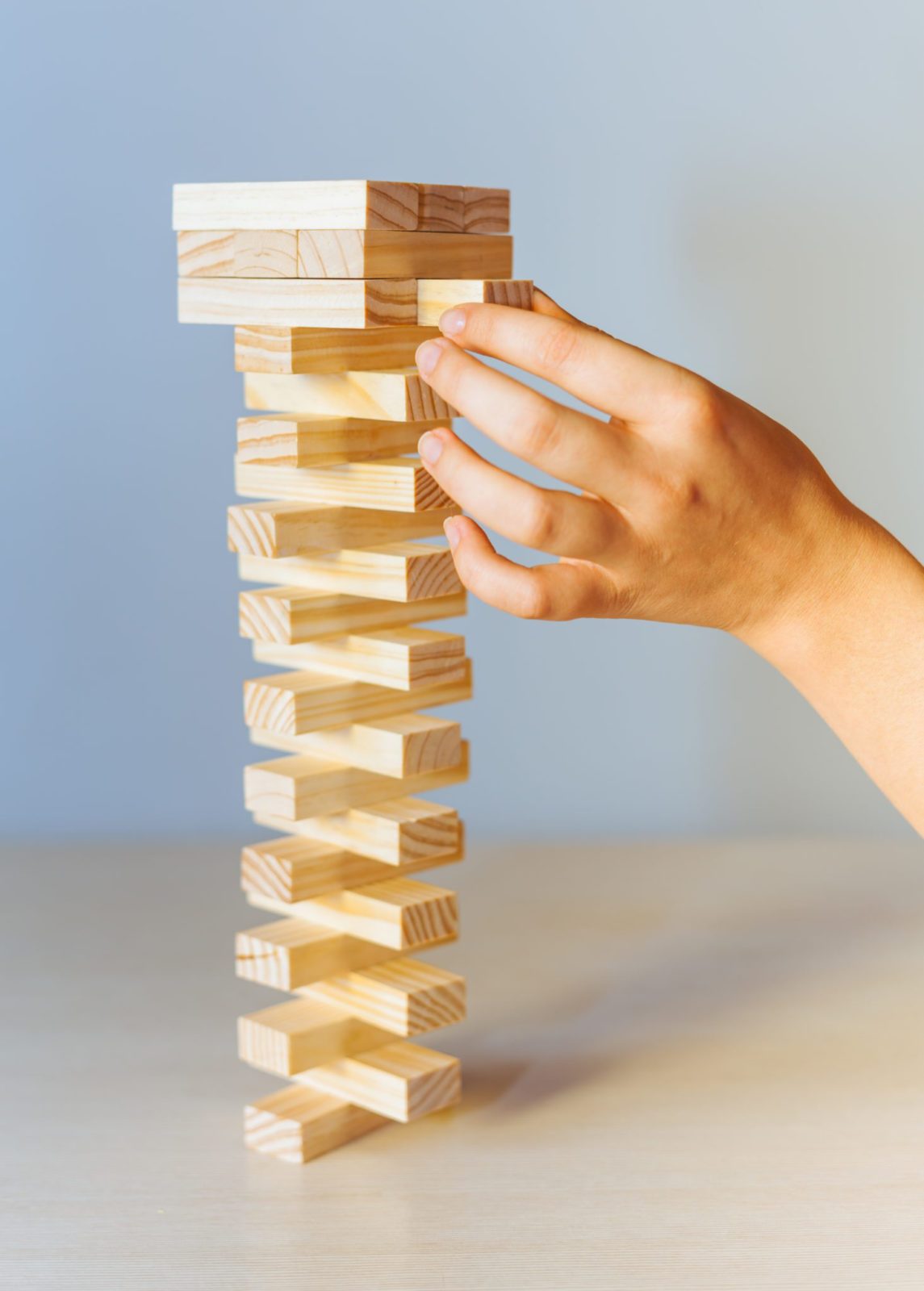How to Play Jenga | Complete Game Tutorial, Rules, and Tricks
Jenga Basics
What is Jenga?
Jenga is a tabletop game of hand dexterity and anticipation as players take turns removing rectangular wooden blocks from a stack and placing them on top of an ever-growing tower. But watch out! One false move and the wobbly tower comes crashing down!
Why Jenga is fun?
Jenga is a universal game for anyone 3-years old and up, so it’s great for most groups. A mix of fear and greed drive your selection in either playing it safe and pulling an easy piece to avoid crashing the tower yourself, or pulling a challenging piece to set up the next player to topple the tower. Moments of silence and concentration quickly turn to cheers and groans as the tower teeters, recovers, wobbles, and ultimately crashes noisily at the end of each game.
What is the objective of Jenga game?
The object of the Jenga game is to remove one piece and place it atop the tower without knocking the structure (or other pieces) over. The winner of the game is the last player who successfully played a turn before the tower is knocked over.
How many people can play Jenga?
Jenga is best played with 2 to 6 players so that everyone can fit around the tower and also get frequent enough turns to keep it engaging.
Skills
Fine motor skills and coordination, taking turns. More benefits listed here.
Age
3 and up, but not just a kid game. Adults love it too!
Playing time
A game of Jenga usually lasts 5-15 minutes and game length is mostly determined by how aggressively players play to make the tower challenging and how focused they are on their turns.
Equipment
A set of Jenga includes 54 wooden blocks. The stacking guide that comes with the game isn’t necessary, but does make it easier to assemble the starting tower that’s made up of 3-block stories, stacked with each level perpendicular to the level above and below it, to form an 18-story tower.
We recommend:
- Standard Size Jenga: The Official Jenga Game or the Premium (and Beautiful) Unofficial Version
- Jumbo Size: This Official Giant Jenga game is awesome, or if you’re looking to save some money, this giant version by Giantville is great too!
How to Play Jenga
1. Build the tower to set up the game
The Jenga game has 54 blocks, or wooden pieces that are grouped together in threes to form 18 stories. Each story is stacked so that it lies flat and is at its thinnest vertically. The stories alternate direction by 90 degrees so that each story above and below it are perpendicular in direction to it.
2. Determine who goes first
The person who builds the tower goes first. In the first game, if only one person builds the tower, that’s who starts. If multiple people work together to build the tower, you can come up with some other way to determine who goes first (youngest, flip a coin, odd man out, etc). There’s no real advantage in going first, so don’t sweat it. In subsequent games, the player who knocks over the tower rebuilds it for the next game and is the first to play that game.
3. Remove one block from the tower
Touching the tower with only one hand at a time, the player must remove one block from anywhere below the highest completed level, which means it will either be the 2nd level or below if the top level is complete with 3 pieces OR the 3rd level if the top level is incomplete with 1 or 2 pieces, making the 2nd level the highest completed level.
4. Play the pulled block atop the tower
The player must then play the block atop the tower, in a direction perpendicular to the layer below it. Players may not start a new level until the level below it is complete with 3 pieces.
5. Complete the turn
The player’s turn ends after they have pulled and played the block, as described above, and either:
A: 10 seconds has passed since they played their piece atop the tower
B: The next player touches any block
6. Continue Play Clockwise
Play continues clockwise to the next player until the end of play
7. End play when blocks fall
Play ends when a player knocks over any blocks on the tower other than the one they are playing.
8. Declare the winner
The winner of the game is the last player to successfully complete a turn before the end of play when the tower (or some blocks) are knocked over.
9. Set up the next game
Whoever knocked over the tower sets up play for the next game.
Jenga Video Tutorial
Jenga Frequently Asked Questions (FAQs)
Jenga Rules FAQs
What are the rules of Jenga?
The basic rules of Jenga are that players take turns removing a block from the tower, using one hand at a time, and stacking them on top without knocking the tower over. For a full description of the rules, read the tutorial above or the additional rules questions below.
What is not allowed in Jenga?
There are 3 things now allowed in Jenga:
- Touching any part of the tower with 2 hands at the same time (including holding the tower with your other hand while removing a piece with the other)
- Removing from the top row of 3 (or above)
- Grabbing the tower as it falls to save it
Can you use 2 hands in Jenga?
Yes, you can use 2 hands in Jenga, just not at the same time. During a turn, you may only touch a block or the tower with one hand at a time. You are free to use either hand, or even alternate hands during a turn, as long as you only touch with one hand at a time.
Can you take from the top 3 in Jenga?
No, you cannot pull from the top 3 blocks in Jenga. You can only pull from BELOW the highest completed row of 3 in jenga. So that means the highest you can pull is either the 2nd row (if the top row is complete with 3 blocks), or the 3rd row (if the top row is incomplete with either 1 or 2 blocks, making the 2nd row the highest completed row).
Do you yell Jenga when it falls?
There is no requirement to yell Jenga when the tower falls. Although sometimes it’s fun to say it to psych another player out and make them laugh during play, or to add excitement when the tower is falling.
Can you catch or grab the tower in Jenga as it falls?
No. Once the tower is falling, the game is over. So catching it, even with one hand, doesn’t matter. The game has still ended.
Can you touch multiple blocks in Jenga?
Yes! It’s totally acceptable to touch different blocks to test which ones are loose and easy to play. Just remember to only touch with one hand at a time. And if you moved a piece that you decided not to play, you should attempt to put it back in its original position (as long as doing so is unlikely to knock over the tower).
Can I hold the tower with my other hand while removing a piece?
No, holding the tower with one hand while removing a piece is not allowed. It violates the rule of touching the tower with both hands at the same. But you can use your forearm from the same hand to brace it while you play!
How to Play Jenga FAQs
How do you play the Jenga game?
Fundamentally, playing Jenga is about removing a single piece from the tower, using one hand at a time, and placing it atop the tower without knocking it over. Read the rest of this tutorial for more instructions and rules.
How many people can play Jenga?
Jenga is most fun with 2-6 players. You need at least 2 players to play an official game of Jenga. More than 6 players is both more difficult to fit the players around the game and less engaging because there is a long wait between turns.
Can you play Jenga with 1 player?
You can attempt to build the tallest tower, or practice building with one player. But the game play as set out in the game requires at least two players.
Types and Variations of Jenga FAQs
What other versions of Jenga does Hasbro sell or license?
Over the years, Jenga has released or licensed out a number of versions of the game, including: Jenga Truth or Dare, Jenga Extreme, Casino Jenga, Jenga XXL, Jenga Giant, Jenga Pass Challenge, and a bunch of collectors edition versions.
What other ways have people made Jenga fun?
Probably the most popular variation of Jenga is “Jenga Questions” which we detail in our Jenga Questions article and briefly outline is a separate question below. Other versions include Jenga Dice, Yoga jenga, Reverse Jenga, and more. There are even some adults-only versions like “Jenga Drinking Game.”
How do you play Jenga questions?
Jenga questions is a variation of Jenga in which a question is associated with each block. This variation is often used as icebreakers, conversation starters, in therapy, or just to make it more fun.
Check out our full Jenga Questions tutorial here, or read the brief outline below.
While some people actually write the question on the block, DON’T DO IT. You’ll get tired of the same questions every time. And different questions are written on each block.
We recommend you actually number the blocks 1-54 and then use a corresponding question sheet. That way you can swap out questions easily.
You can play where only the person who pulled the block has to answer the question, or have everyone answer the question.
What to write on Jenga blocks
Again, don’t write the question on the blocks. Write numbers on the blocks and use a corresponding question sheet.
Here are some 5 types of questions/actions that work well.
- Would you rather… (e.g. eat, be covered in, etc)
- If you were a [INSERT] and why (e.g. animal, car, etc. l
- Do this thing…(e.g. Spin around 3 times, make your favorite animal noise and we’ll guess it, etc)
- What’s your favorite (food, sport, animal, etc)
- Deeper questions
Looking for some Jenga question ideas, check out these lists from Wayfaring Humans, Tulsa Camp Fire, and Kids Care Ideas.
How do you play Jenga Dice?
There are several Jenga variations you can play with dice.
1. Dice determine blocks per turn. A simple variation of Jenga is to introduce dice to the game. Instead of each player just playing one block during their turn, they’ll first roll a single die to determine how many blocks they must play before their turn is over. Roll a six and you must play six pieces in a row, before it’s the next player’s turn. This element of variability and luck can make the game exciting. It also allows for more strategy within a turn, because more moves in a turn allows a player to set up the next player for a more challenging turn by creating an unstable tower.
2. Dice and numbered blocks math game. In this version, you need all 54 of your Jenga dice numbered, from 1 to 54. You can play with 4 dice (complex addition), or 2 dice (simpler addition of addition, or multiplication). These games deserve their own full instructions here.
Jenga Tricks and Strategies
How do you win at Jenga?
Looking to win in Jenga? Or how about just not being the one to knock over the tower? We’ve got you covered.
Winning at Jenga requires 2 things:
1. You don’t knock over the tower during your turn
2. The person taking the turn after you DOES knock over the board.
So let’s take a look at each of these a little bit closer in the next few questions.
9 strategies to not lose Jenga by toppling the tower
One of the first requirements to win at Jenga is to not lose by knocking over the tower yourself. Here are 9 strategies that will help you play a turn that doesn’t lose you the game:
- Test before you pull. Avoid anything that feels risky or tight.
- Remove middle pieces first. You’ll rarely knock over a tower pulling from the middle.
- Look for loose pieces, especially middle pieces. Loose pieces aren’t load bearing and are easier to remove
- If leaning one way, pull from the opposite side.
- If possible, place your piece on the opposite side it’s learning.
- Don’t think too far ahead. In fact, just focus on your current move.
- Push, don’t pull pieces. Pulling motions are more likely to
- Use the hinge method. You may find pieces you can rotate out from one side, like a hinge, then pull out. But watch out, this is a more advanced move
- Use the poke flick method. This move is risky, but sometimes you’re only left with tight pieces. A quick poke or flick can disturb the tower less that a slow move.
But remember, not losing at Jenga is not the same as winning. Read below to learn strategies to win!
3 strategies to win any Jenga game
Winning at Jenga isn’t just about not toppling the tower yourself. To win, you need the person following your turn to know over the tower. If someone else knocks over the tower, you’re just one of several losers of the game.
That means you need to play aggressively to set up an unstable board so that the person following you knocks it over. So let’s look at some strategies that help you set up the next turn to fall.
- Don’t fall into the cooperative trap. Building the tallest tower is not the goal of the game; having the person following your turn topple the tower is. So look to play more aggressively to make the next person’s turn more challenging.
- Leave only a middle block. When two side pieces on a level are removed, the tower is less stable. Look for opportunities to remove the second side piece and leave only a middle piece.
- Stack it with a lean. You may be able to place your piece atop the tower in a way that leans closer to falling. But be careful not to push it too far.
2 secret Jenga trick moves most people don’t know about
The outside pinch
If two outside pieces remain in a story, you can pinch them together (with one hand only) into the middle, then leave one as the middle piece while you pull out the other. This is especially good when either: all other moves look riskier OR you want to set up the next player to topple the tower.
Forearm helper
You CAN use your forearm to brace the tower while you pull a piece, as long as it’s part of the same arm you’re using to pull and play the pieces. The rules only state that you can’t use 2 hands at the same time! Also, while you can’t catch a falling tower, the reason you can’t do that is because the rules say the game is over once any pieces (besides the one you’re playing) start to fall. But what you’re doing with the brace is preventing the start of the fall, so it’s totally ok!
About Jenga (History and More!)
Who invented Jenga?
Jenga was invented by Leslie Scott, a British board game designer in the 1970s. Her family initially played with a version whose pieces more closely resembled children’s building blocks. The game evolved more to what we know today, and was sold commercially, in the early 1980s.
What does Jenga mean?
Jenga comes from the Swahili word “kujenga,” which means “to build.”
When was Jenga invented? When did Jenga come out?
The early game of Jenga was invented and evolved during the 1970s with the inventor’s family playing versions of it. But it wasn’t officially sold to consumers until 1982 in a Harrods department store in London, and then more broadly launched in the 1983 London Toy Fair. Shortly following that, it was more broadly licensed and expanded to a company that was ultimately purchased by Hasbro.
How do pronounce Jenga?
Jeng – guh
Jenga Equipment and Setup
How many pieces, or blocks, are there in Jenga?
Jenga is made up of 54 wooden blocks. In the initial setup, the blocks are grouped 3 per level to form an 18 level tower, which are often called “stories.”
How do you set up, or stack, Jenga?
To start the Jenga game, blocks are stacked in groups of 3 into a tower that is 18 stories tall. On each level, the 3 pieces are each parallel to each other and form a rectangle. The direct of the pieces should alternate 90 degrees on each level, to create a more stable structure.



